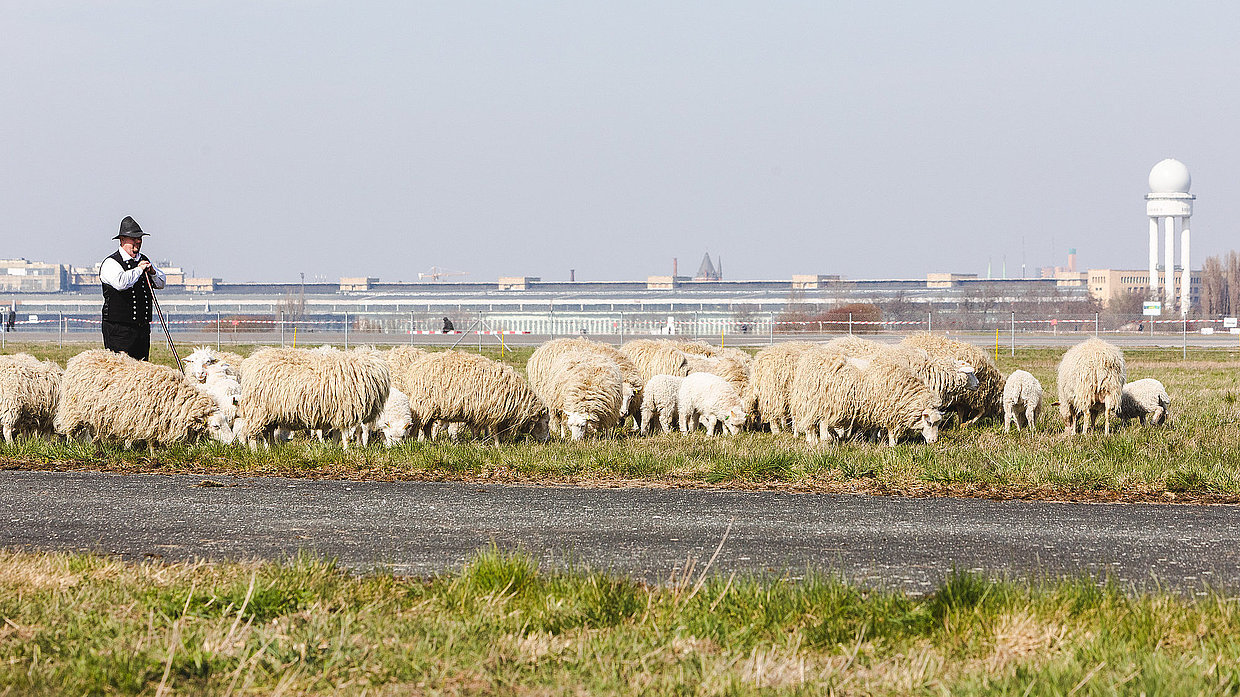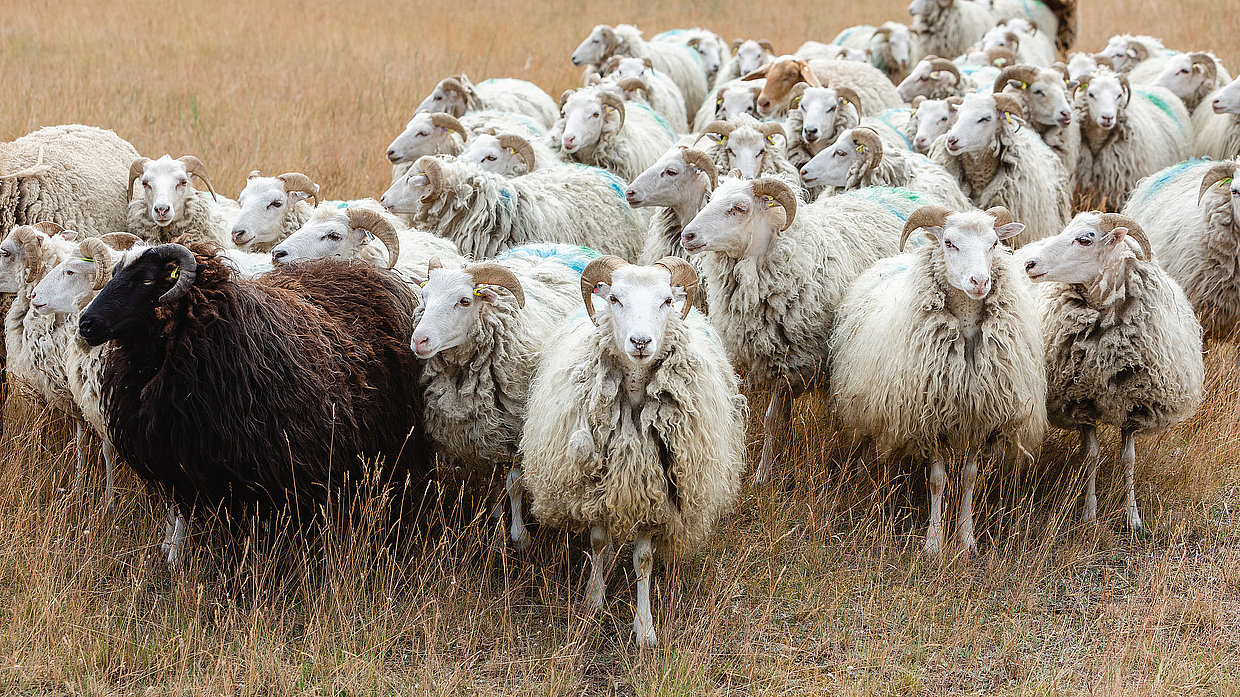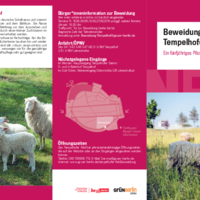URBAN AGRICULTURE
Natur & Umwelt
With the end of flight operations, a special flora and fauna has developed on Tempelhofer Feld. In the middle of the big city, animal species worthy of protection cavort between the former runways and numerous plant species, some of which are rare, thrive on the large meadow areas.

Animal landscape maintainers in action
As in other parks and green spaces, gardeners take care of the green spaces on Tempelhofer Feld all year round. In 2019, new animal landscape maintainers came into use. In consultation with the Senate Department for Mobility, Transport, Climate Protection and the Environment as well as the field coordination within the framework of citizen participation, Grün Berlin started a five-year pilot phase of grazing the Tempelhofer Feld.
Initially, 25 Skudden sheep, a breed of sheep threatened with extinction, found a new home on the site. In the meantime, the flock has grown to about 100 animals. On the firmly fenced skylark protection zone (approx. 23 ha) they are used for successive grazing and maintenance of the area. In terms of stocking density, this corresponds to extensive grazing for extremely low-yield sites, i.e. only very few animals are used in relation to the size of the area and the vegetation. The results of the grazing are scientifically monitored and continuously analysed and evaluated.
Grazing strengthens biological diversity
Normally, the areas on the Tempelhofer Feld are mown in regular rotation once or twice a year. During mowing, the entire vegetation is suddenly removed. This abrupt change in the microclimate and the short-term removal of biomass and refuges for animals has a negative impact on biodiversity.
Extensive grazing, in comparison, is a much gentler landscape management. By grazing the animals, the area conditions do not change suddenly and radically, but slowly and continuously. In addition, grazing does not result in a uniform "bare cut", but in a very diverse landscape. Some areas are heavily frequented by the animals, creating open ground areas that are used by birds, insects and reptiles as sunbathing sites. Other areas are less interesting for the grazing animals; here a high ruderal vegetation develops that can be a retreat for birds, insects and reptiles. According to scientific findings from other grazing projects throughout Germany, this diverse mosaic-like area design has a positive effect on biodiversity.

Farm animal breeds threatened by extinction
Just like wild animals and wild plants, there are also many breeds of farm animals that are threatened with extinction and are on red lists. In the past, agriculture used to work with a large variety of livestock breeds because the animals were adapted differently to the requirements of the respective region. With the end of the Second World War, a restructuring of agriculture began, in the course of which the demands on farm animals changed greatly. Above all, intensive performance breeding became established. As a result, only a few high-performance breeds are used in agriculture today.
However, the endangered breeds have many genetic characteristics worth preserving, such as their longevity, frugality, resistance or good mothering qualities. This also includes the Skudden breed, which is used in landscape management at Tempelhofer Feld and is being preserved through use and breeding work.
Skudden are the smallest German sheep breed and originally come from East Prussia and the Baltic States. The breed was on the verge of extinction after the Second World War and could only be preserved in Germany through a small breeding stock in the Hellabrunn Zoo (Munich). There are white, brown and black colourings. Only the bucks are horned. Skuddens are tough, robust, undemanding and very good feed converters, which is why they are very well suited for year-round grazing and landscape management.
Grün Berlin actively promotes the preservation of other endangered breeds in the Kienberg Ark Park, which is certified by the Society for the Preservation of Old and Endangered Breeds of Domestic Animals (GEH). Here, conservation and education work is carried out on the breeds Red Highland Cattle, Dülmen Horses, Dark Bee, Coburg Foxes and Skudden.
Downloads
904.71 KB - pdf
Download